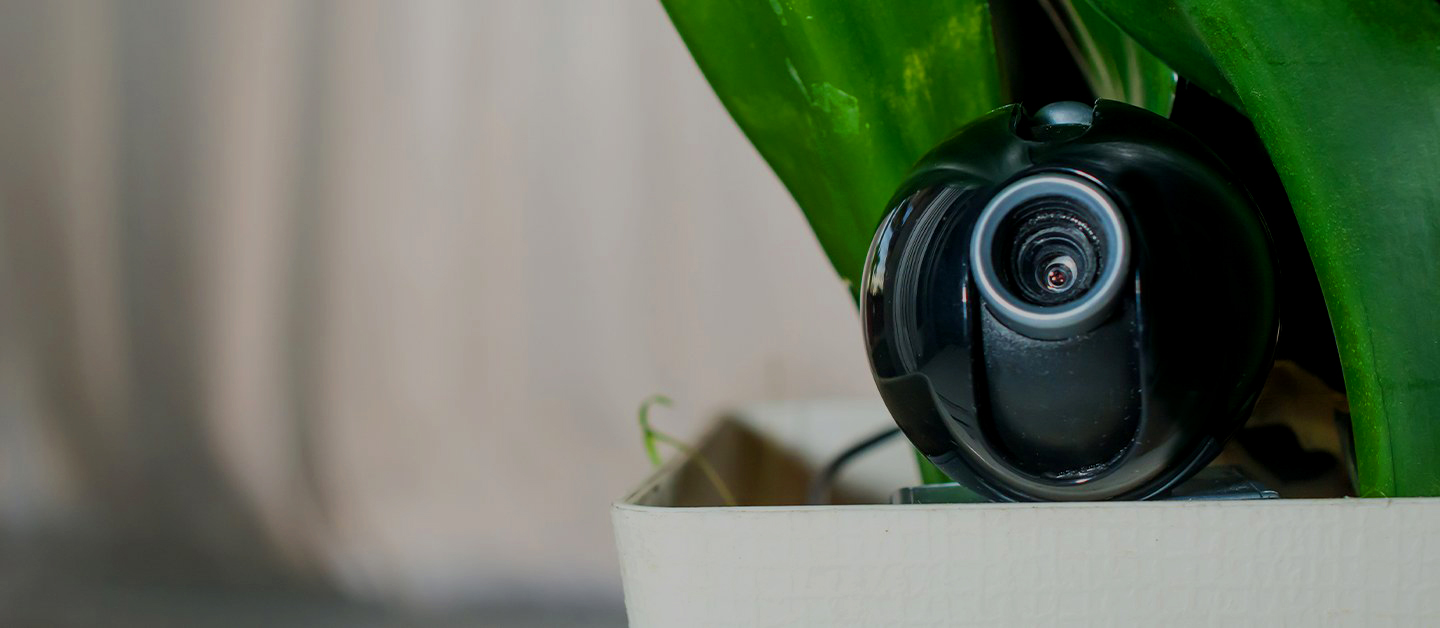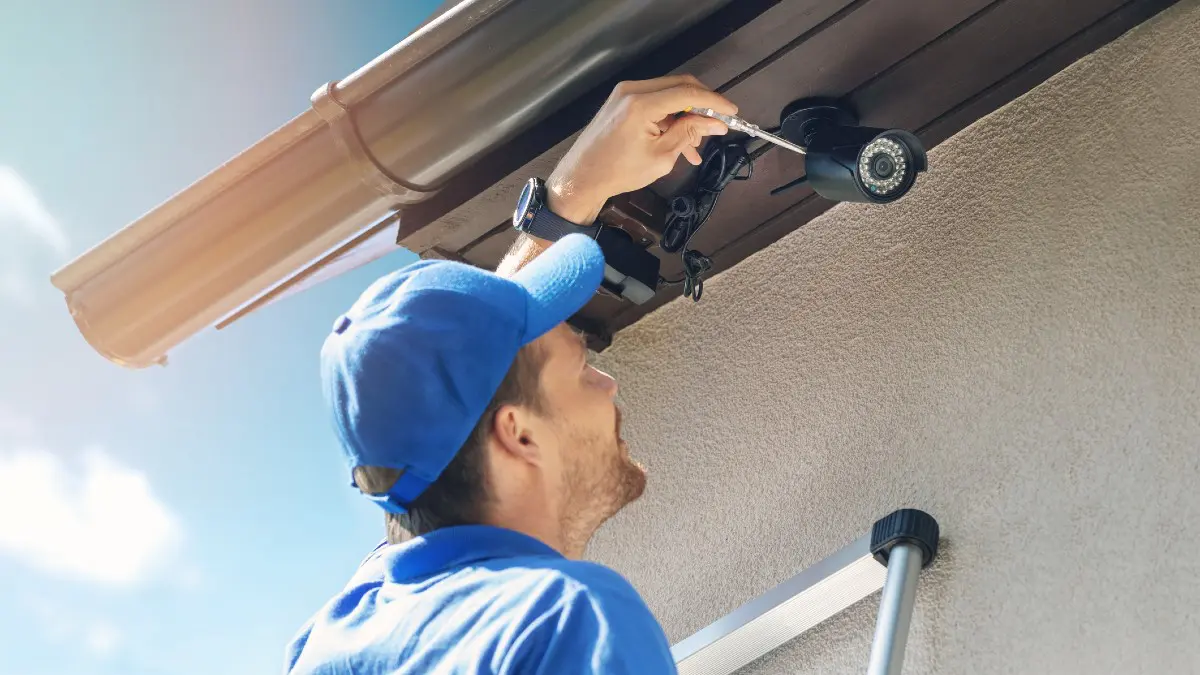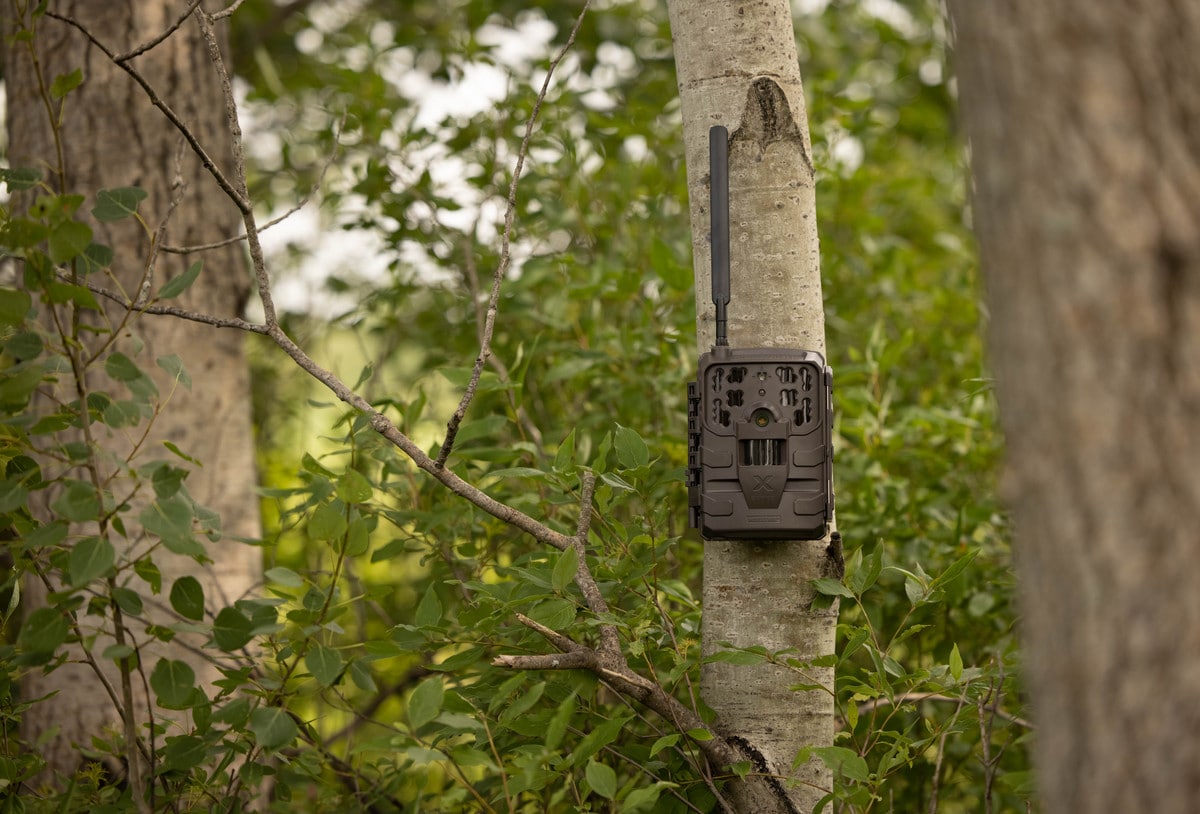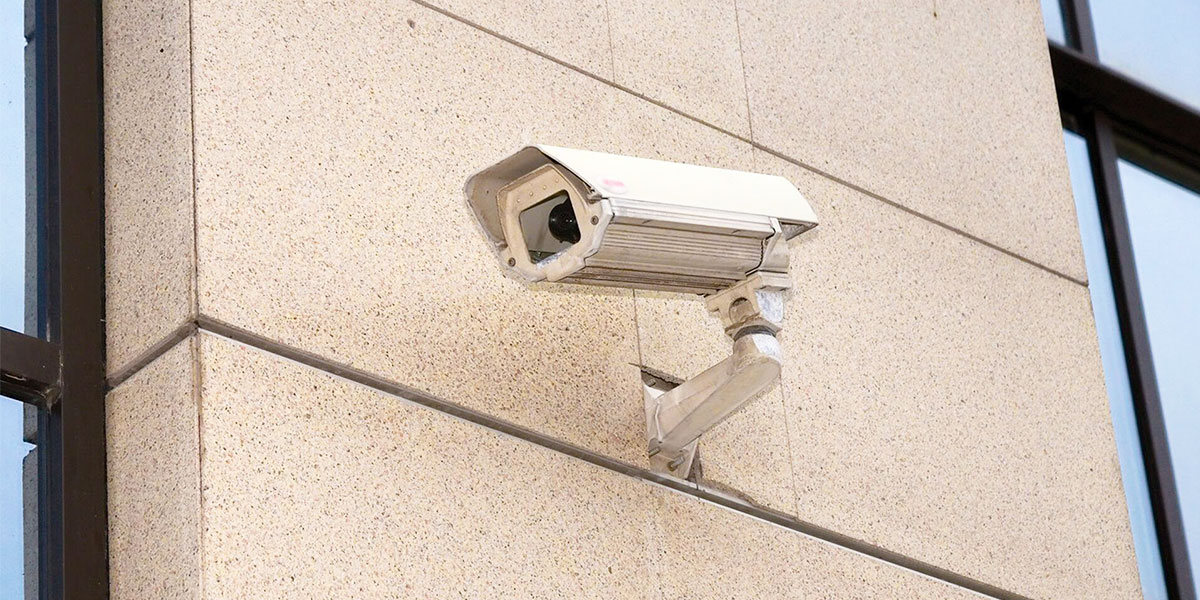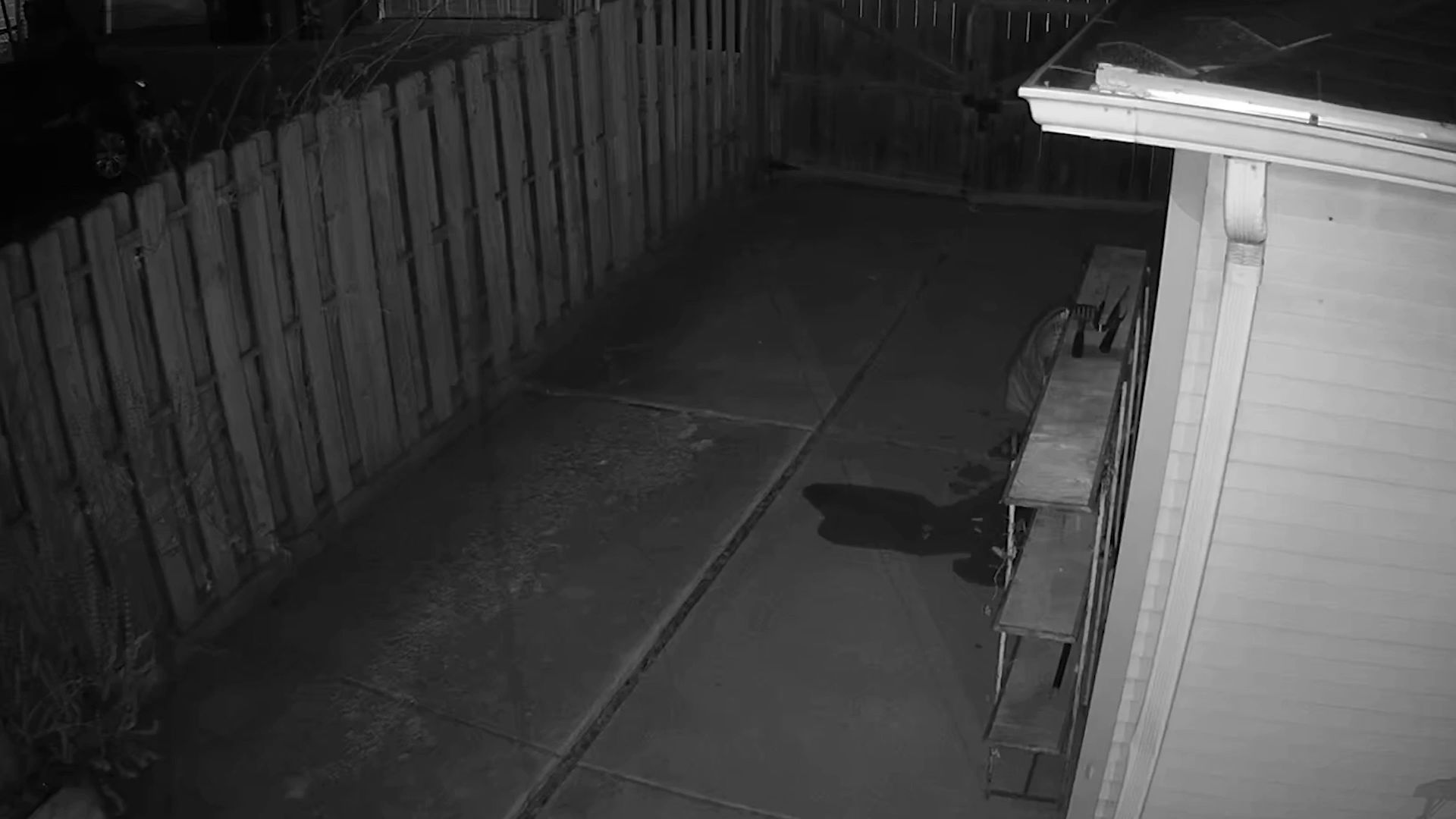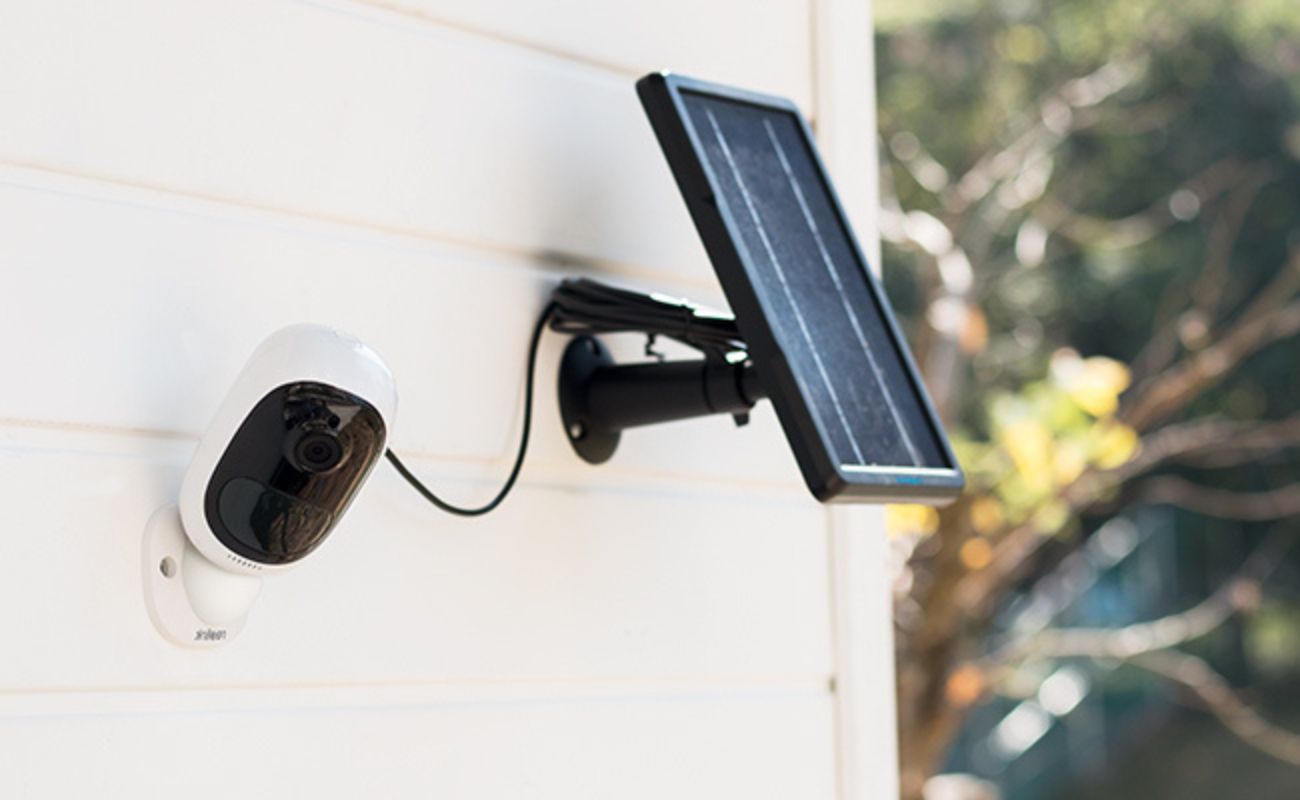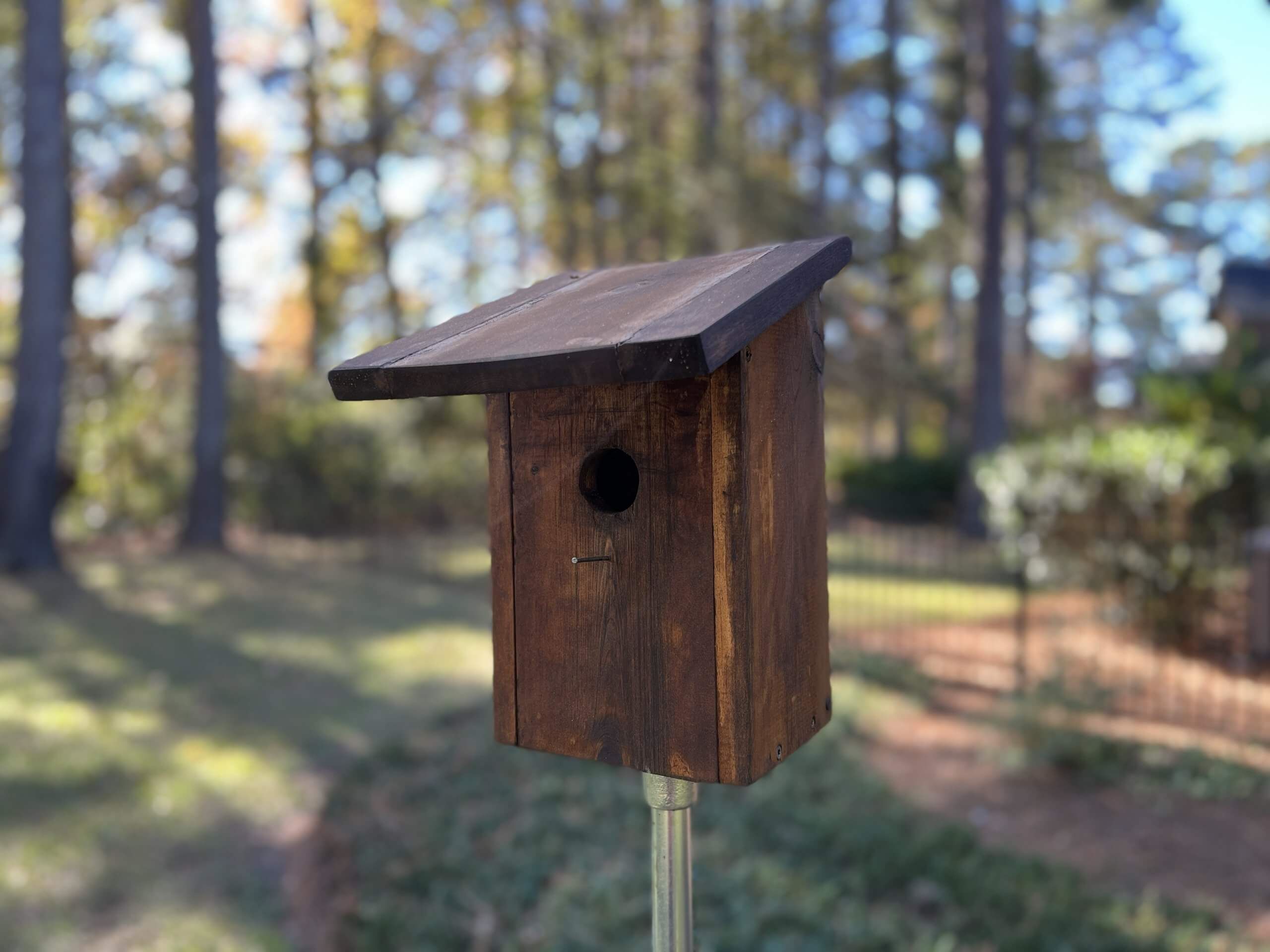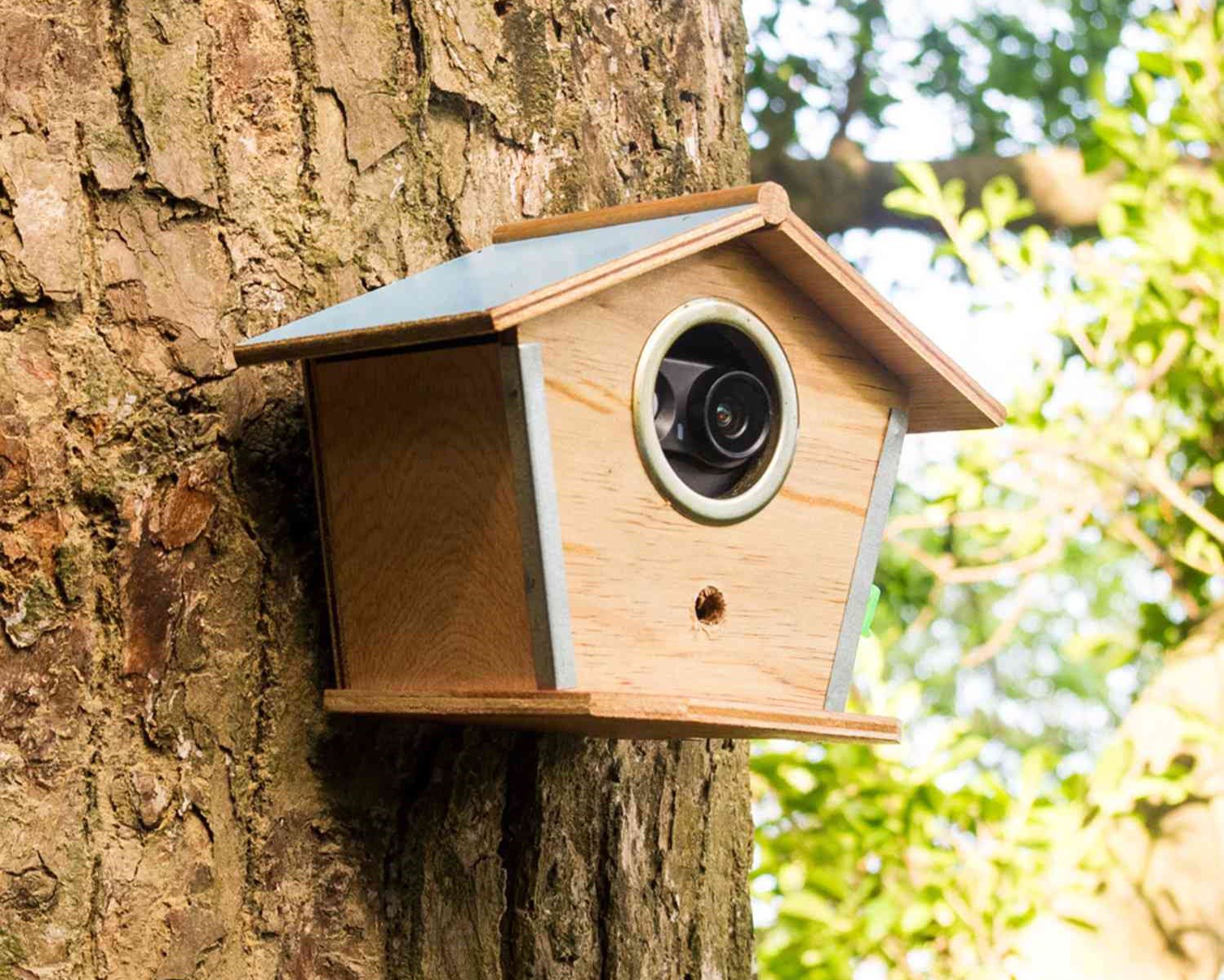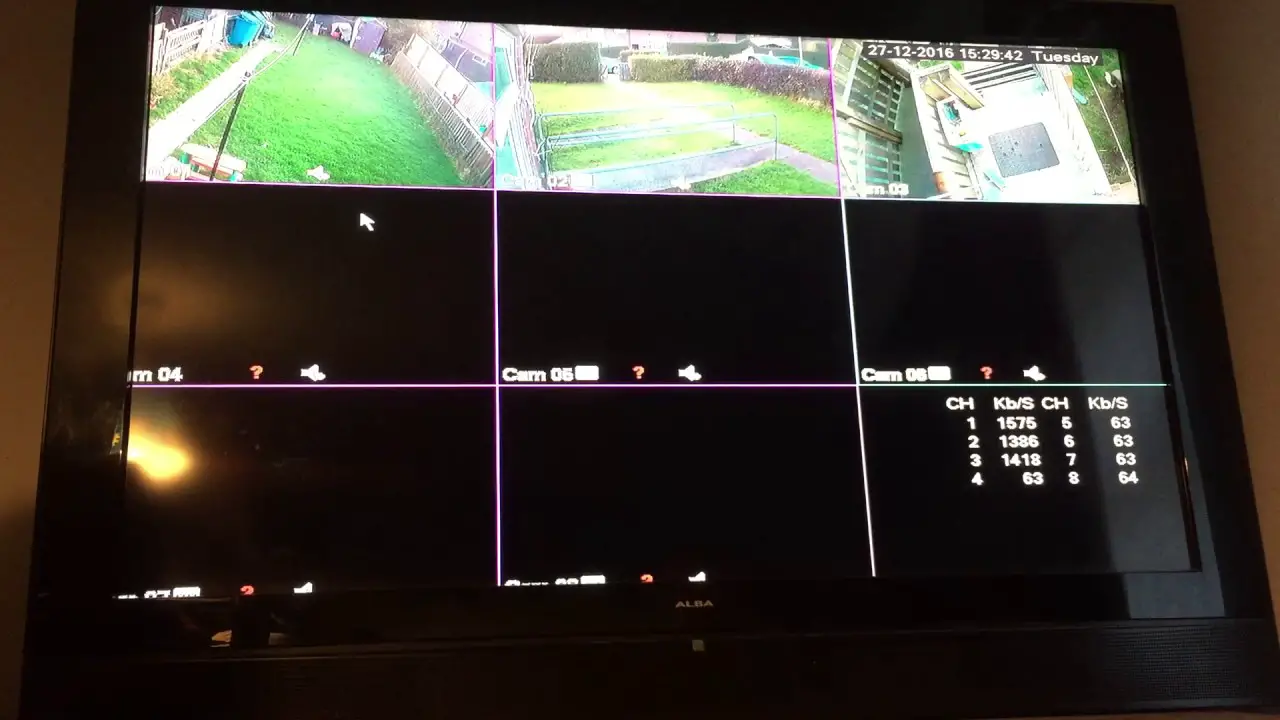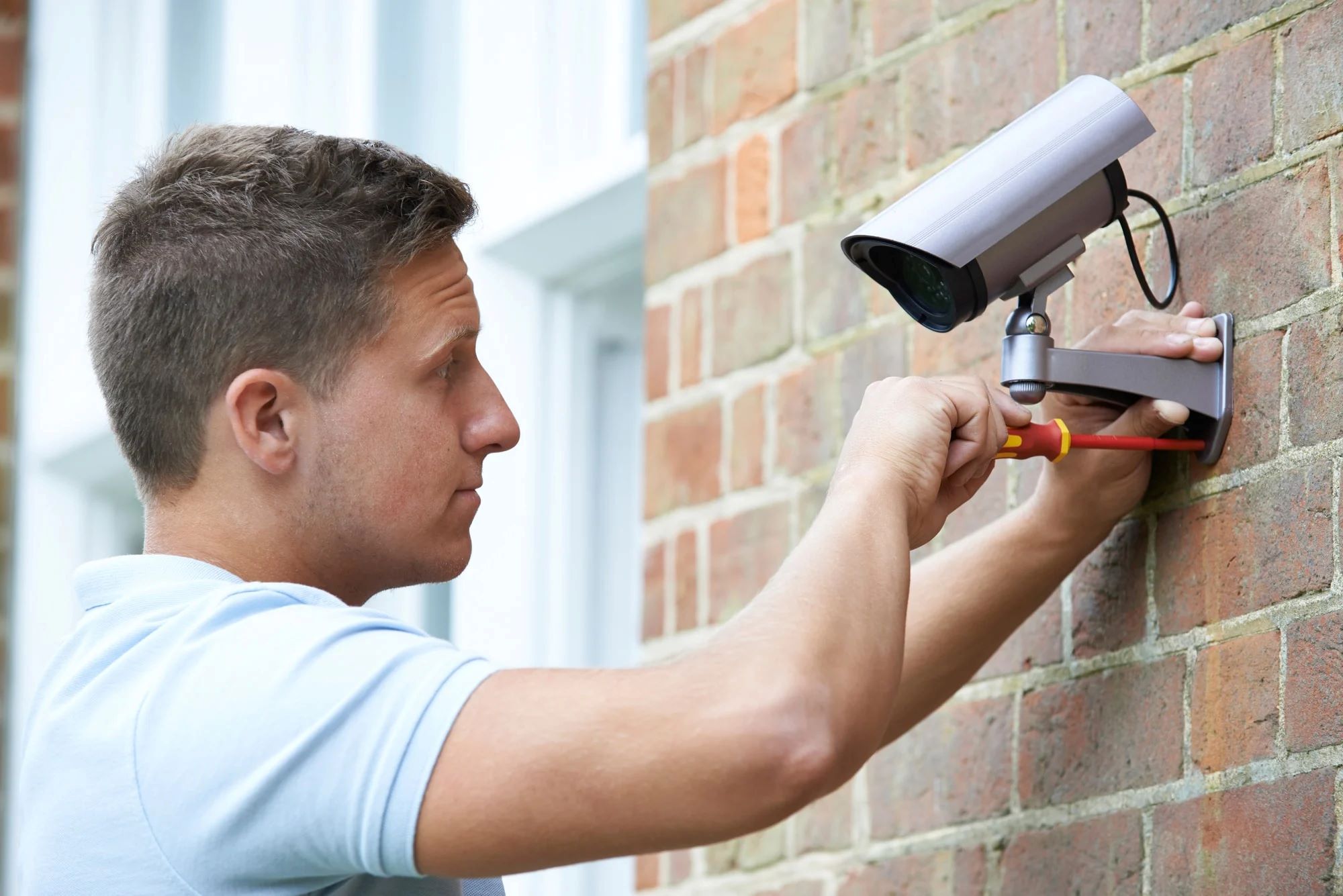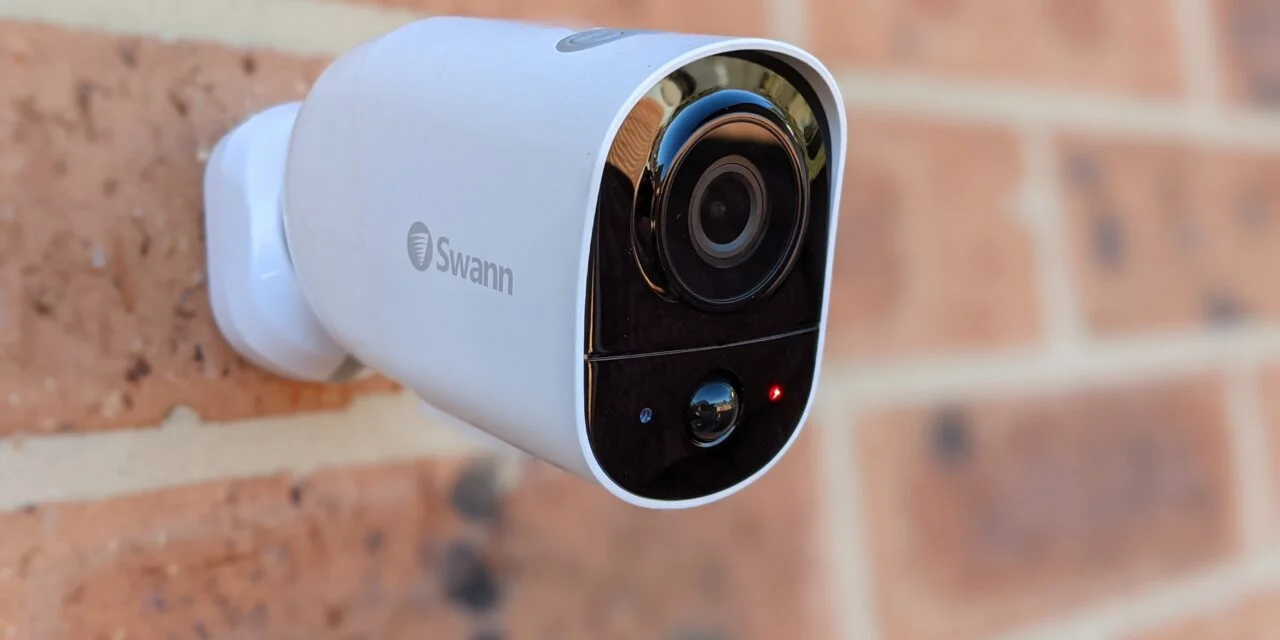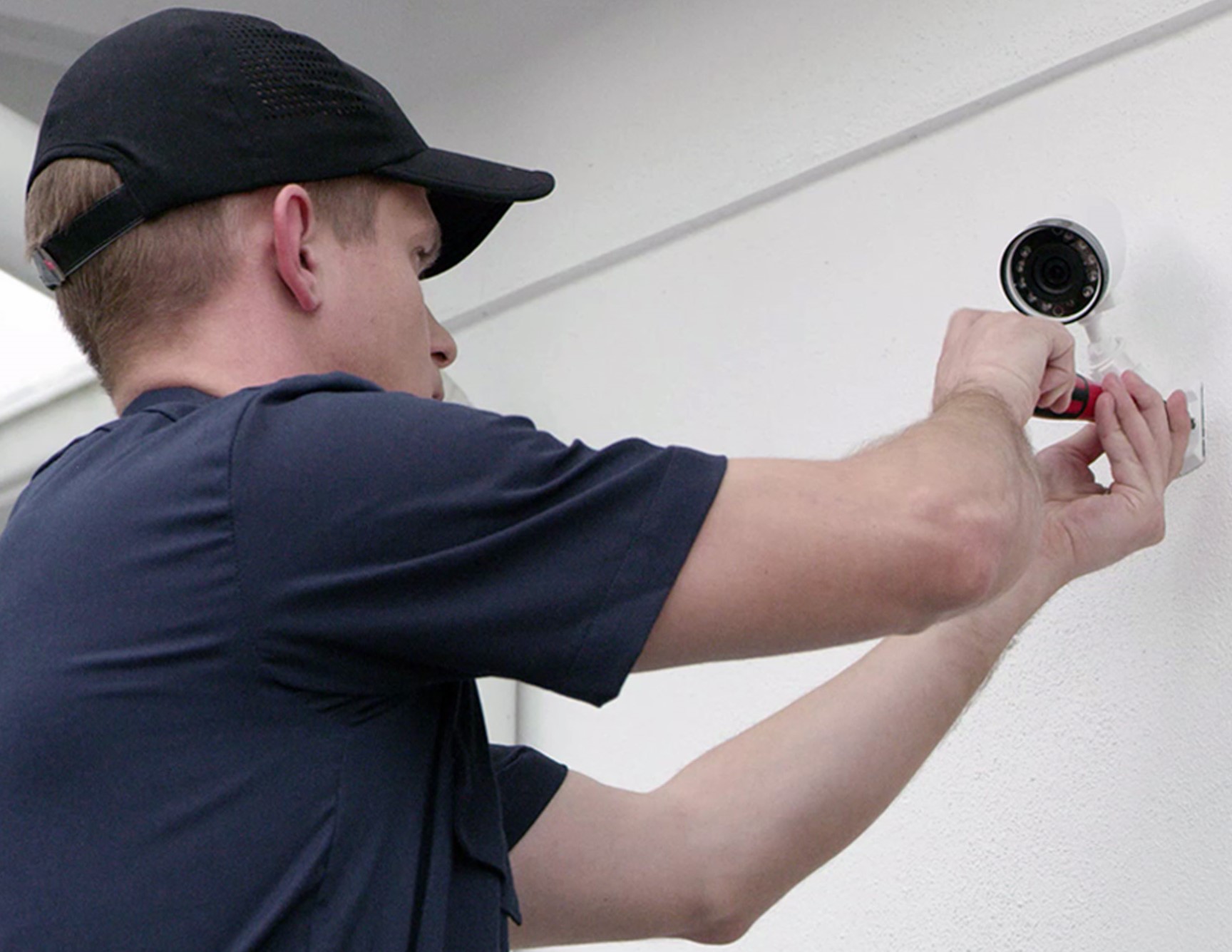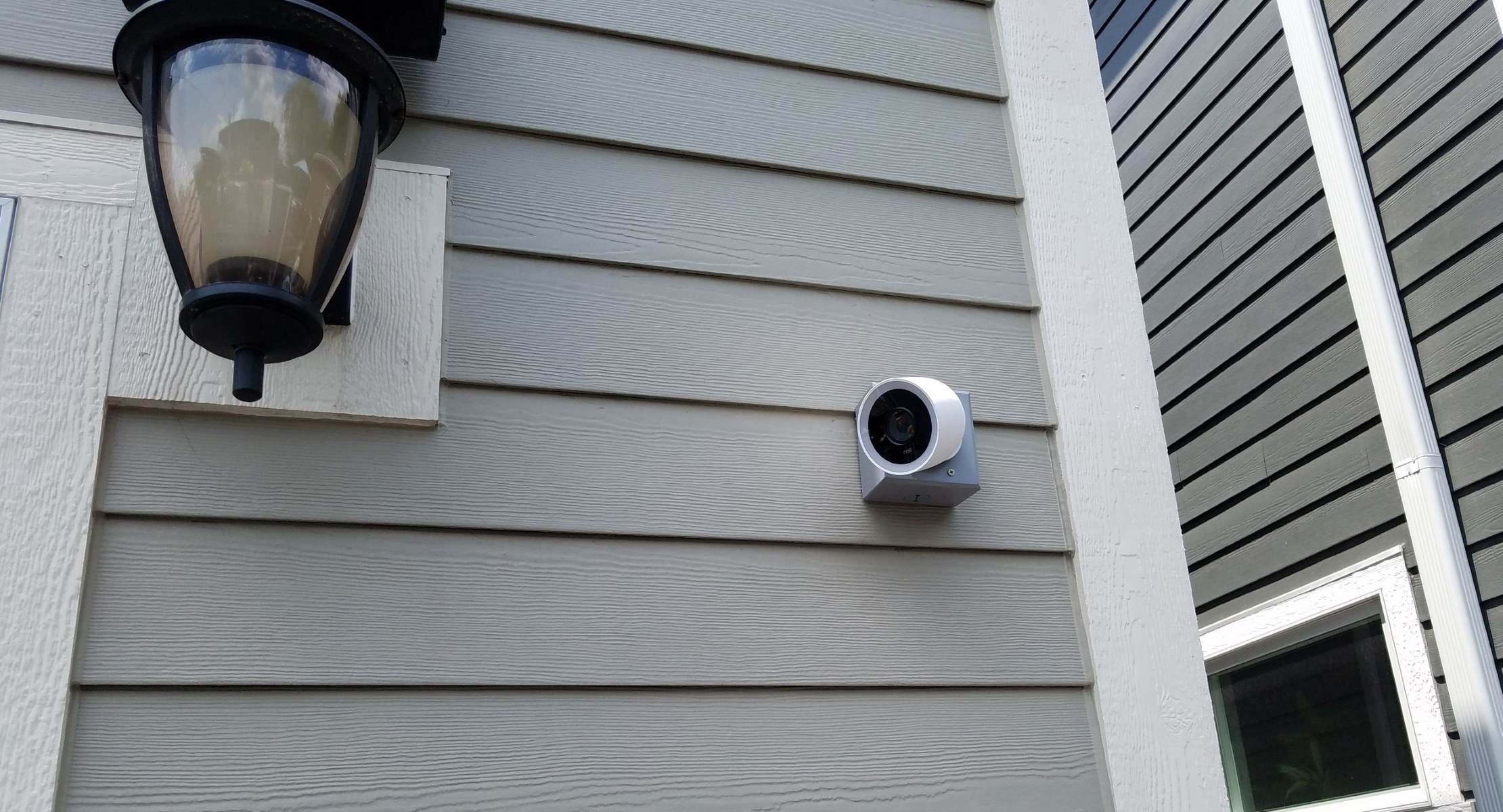Home>Home Security and Surveillance>How To Hide From Security Cameras
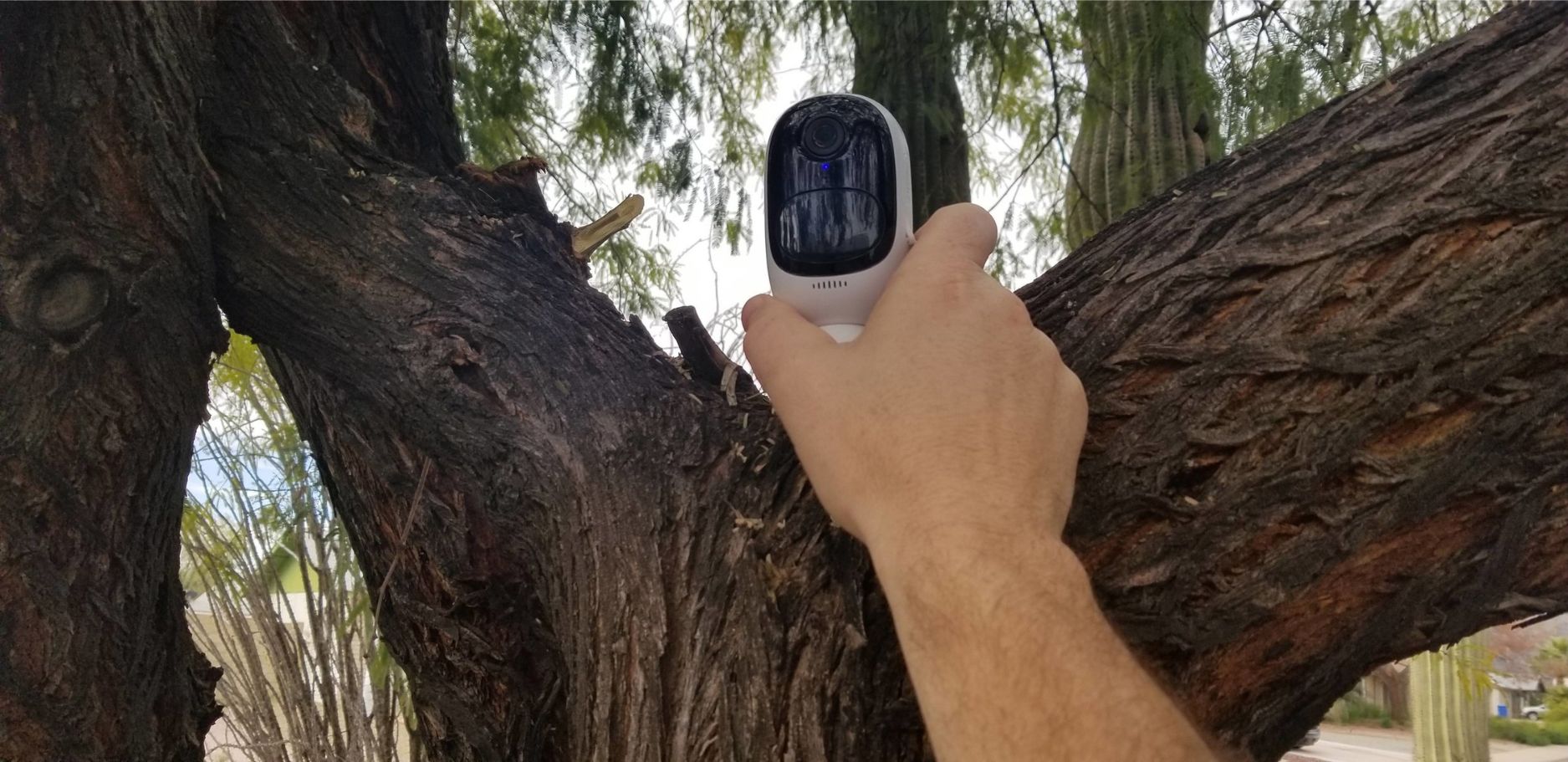

Home Security and Surveillance
How To Hide From Security Cameras
Modified: March 6, 2024
Learn effective techniques to hide from security cameras and protect your privacy at home. Enhance your home security and surveillance with expert tips and tricks
(Many of the links in this article redirect to a specific reviewed product. Your purchase of these products through affiliate links helps to generate commission for Storables.com, at no extra cost. Learn more)
Introduction
Whether you’re a prankster trying to avoid detection or simply concerned about your privacy, knowing how to hide from security cameras can be valuable knowledge in today’s surveillance-filled world. With the increasing prevalence of security cameras in public spaces, workplaces, and even residential areas, it’s natural to have concerns about being constantly monitored. In this article, we’ll explore different methods and techniques to help you hide from security cameras.
Before we delve into the various hiding techniques, it’s essential to understand how security cameras work. Surveillance cameras use a combination of technology, sensors, and lenses to capture and record video footage. They can be equipped with infrared capabilities, motion sensors, and zooming functions, which allow them to monitor and capture images both during the day and at night.
When it comes to hiding from security cameras, there are a few important factors to consider. First and foremost is the purpose of the security camera. Is it for public safety, crime prevention, or monitoring specific areas? Understanding the intentions behind the camera installation can help you assess the level of surveillance and determine the best methods to avoid detection.
The location and angle of the security camera are also crucial considerations. Is the camera positioned to monitor a broad area, or is it focused on a specific target? Knowing the camera’s field of view can help you determine the most effective hiding strategies.
It’s important to note that actively trying to hide from security cameras may be perceived as suspicious behavior and potentially illegal in certain circumstances. Therefore, it’s crucial to consider the legal and ethical implications of your actions before attempting any hiding techniques.
In the following sections, we will explore natural methods of hiding, such as using physical barriers and natural foliage. We will also discuss artificial methods, including utilizing clothing and accessories to blend in with the surroundings. Additionally, we will delve into more advanced techniques, such as using reflective surfaces or infrared-blocking materials.
By understanding and implementing these techniques, you can increase your chances of evading security cameras in various scenarios. However, always remember to prioritize your safety and respect the laws and regulations in your area regarding privacy and surveillance.
So, let’s dive in and explore the different ways you can hide from security cameras.
Key Takeaways:
- Hiding from security cameras involves natural and artificial methods, such as using physical barriers, blending in with surroundings, and wearing disguises. However, it’s important to consider legal and ethical implications before attempting any hiding techniques.
- Understanding the purpose, location, and features of security cameras is crucial when trying to evade them. Always prioritize personal safety and respect the laws and regulations regarding privacy and surveillance.
Read more: How To Hide A Security Camera
Understanding Security Cameras
Security cameras, also known as surveillance cameras, are widely used for monitoring and recording activities in various settings. They play a crucial role in deterring crime, ensuring public safety, and providing evidence in legal proceedings. Understanding how security cameras work can help you devise effective strategies to hide from them.
Security cameras come in different types and have varying features, but they all function on similar principles. They consist of a lens, an image sensor, and a processor that captures and processes video footage. The lens captures the light from the surroundings and focuses it onto the image sensor, which converts the optical image into an electronic signal. The processor then compresses and stores this signal as a digital video file.
Most security cameras are equipped with sensors and motion detection capabilities. These sensors can detect movement within their field of view, triggering the camera to start recording. Additionally, many cameras have infrared (IR) capabilities, allowing them to capture clear images even in low-light or nighttime conditions.
Knowing the field of view and the range of a security camera is essential when trying to hide from it. The field of view refers to the area that the camera can capture, and the range indicates how far the camera can see and focus clearly.
Security cameras can be positioned in various locations depending on the monitoring requirements. They are commonly found in public spaces like streets, parking lots, and retail stores, as well as in workplaces and residential areas.
It’s important to note that security cameras are typically mounted at strategic locations to maximize their coverage and effectiveness. They may be placed high above ground level, hidden within structures, or encased in protective housings. Understanding the camera’s placement and its blind spots can help you identify potential hiding spots.
Modern security cameras often come with advanced features like pan-tilt-zoom (PTZ), which allows the camera to move and zoom in on specific targets. Some cameras are even equipped with facial recognition technology, making it easier to identify individuals.
However, it’s important to remember that while security cameras enhance safety and surveillance, they also raise concerns about privacy and individual freedom. It’s a delicate balance between maintaining security and respecting people’s right to privacy.
Now that you have a better understanding of how security cameras work, let’s explore some effective methods to hide from them.
Factors to Consider Before Hiding
Before attempting to hide from security cameras, it’s crucial to consider several factors that can impact the effectiveness of your hiding strategies. By evaluating these factors, you can determine the best approach to avoiding surveillance.
1. Purpose of the Camera: Understanding the purpose of the security camera is key. Is it for public safety, crime prevention, or monitoring a specific area? This information will help you assess the level of surveillance and determine the risks associated with avoiding detection.
2. Camera Location: Take note of where the camera is located. Is it positioned to monitor a large area or a specific target? Consider its field of view and range, as these factors can help you identify potential blind spots or areas where hiding is less likely to be detected.
3. Camera Type and Features: Different types of security cameras have various capabilities and features. For example, some cameras have infrared (IR) capabilities for night vision, while others may have pan-tilt-zoom (PTZ) functionality. Understanding the camera’s capabilities will inform your hiding strategies.
4. Lighting Conditions: Assess the lighting conditions in the area where the camera is located. Are there bright lights that can aid in hiding or shadows that can provide concealment? Understanding the lighting conditions can help you camouflage and blend in more effectively.
5. Timing: Consider the time at which you plan to hide from the camera. Is it during the day or at night? Different hiding techniques may be more effective depending on the time of day.
6. Surroundings: Take note of the surrounding environment. Are there natural elements like trees, bushes, or buildings that can provide cover? Assess the layout of the area for potential hiding spots or obstacles that can obstruct the camera’s view.
7. Legal and Ethical Considerations: Before attempting to hide from security cameras, it’s vital to understand the legal and ethical implications. In some jurisdictions, actively trying to avoid surveillance may be considered illegal or suspicious behavior. Consider the privacy laws in your area and ensure that your actions align with those regulations.
Remember, this article is intended for informational purposes only, and any actions taken to hide from security cameras should be done responsibly and lawfully.
Now that you have considered these factors, let’s explore some natural methods of hiding from security cameras.
Natural Methods of Hiding
When it comes to hiding from security cameras, natural methods can be highly effective at blending in with the environment and avoiding detection. Here are some natural techniques you can employ:
1. Utilize Physical Barriers: Physical barriers can help obstruct the camera’s view and provide cover. Look for natural elements such as trees, shrubs, or walls that can act as obstacles between you and the camera. Position yourself strategically behind these barriers to stay hidden.
2. Blend in with the Surroundings: Wear clothing that matches the colors and patterns of the surrounding environment. This helps you seamlessly blend in and makes it more challenging for the camera to distinguish you from the background.
3. Take Advantage of Shadows: Shadows can provide excellent concealment. Position yourself in areas where shadows are cast, such as beneath trees, buildings, or other objects. By staying in the shadows, you decrease the chances of being detected by the camera.
4. Use Natural Foliage: If you find yourself in an outdoor environment with plenty of foliage, take advantage of it. Position yourself behind trees, bushes, or tall grass to create a natural camouflage. Ensure that you are concealed well enough to avoid detection by the camera.
5. Alter Your Walking Route: If you are trying to avoid surveillance cameras in public spaces, consider altering your walking route. Look for less-traveled paths or areas with limited camera coverage. By avoiding the camera’s field of view, you reduce the chances of being detected.
6. Time Your Movements: Observing the patterns and timings of security camera surveillance can be beneficial. If possible, try to time your movements when the camera is momentarily facing away or when the monitoring is less strict. This strategic timing can increase your chances of going unnoticed.
Keep in mind that natural hiding methods may not always be foolproof, especially if the camera’s placement and capabilities are highly sophisticated. Additionally, be mindful of any legal and ethical considerations when attempting to hide from security cameras.
Now that we have covered the natural methods of hiding, let’s discuss artificial methods that can assist in evading security cameras.
Wear dark, non-reflective clothing and a hat to hide from security cameras. Avoid looking directly at the camera and stay in the shadows when possible.
Artificial Methods of Hiding
In addition to natural methods, there are also artificial techniques that can help you hide from security cameras. These methods involve using various tools, accessories, or clothing to obscure your identity or blend in with your surroundings. Here are some effective artificial methods of hiding:
1. Wear Disguises: Wearing disguises can significantly alter your appearance and make it harder for cameras to identify you. This can include things like hats, sunglasses, wigs, or even face masks. Be creative and choose disguises that are inconspicuous and appropriate for the setting.
2. Use Reflective Surfaces: Reflective surfaces can help defeat the camera’s view by bouncing back light and obscuring your face or other identifying features. Consider carrying small mirrors, reflective stickers, or even a piece of jewelry that can be directed towards the camera to obscure your presence.
3. Camouflage Clothing: Investing in clothing that has camouflage patterns can be useful, especially when hiding in outdoor environments. Camouflage patterns are designed to help you blend in with the natural surroundings, making it harder for security cameras to spot you.
4. Carry Portable Privacy Screens: Portable privacy screens or panels can provide instant and effective hiding solutions. These screens can be positioned strategically to block the camera’s view or create a physical barrier between you and the surveillance device.
5. Utilize Infrared Blocking Materials: Some security cameras utilize infrared technology to capture footage in low-light or nighttime conditions. By using materials that block or reflect infrared light, such as special fabrics or coatings, you can make it difficult for these cameras to see you.
6. Employ Anti-Facial Recognition Techniques: Facial recognition technology is becoming more widespread in security systems. Various techniques can help you evade facial recognition algorithms, such as wearing makeup or accessories that disrupt the camera’s ability to recognize your face.
When employing artificial methods, it’s essential to balance effectiveness and subtlety. You want to avoid drawing attention to yourself, as this can raise suspicion and defeat the purpose of hiding from security cameras. Additionally, be aware of any legal or ethical considerations associated with using such techniques.
Now that we’ve explored artificial methods of hiding, let’s move on to more advanced techniques for evading security cameras.
Read more: How To Hide An Outdoor Security Camera
Advanced Techniques for Hiding
When natural and artificial methods are not sufficient, advanced techniques can be employed to enhance your ability to hide from security cameras. These techniques utilize technology and specialized knowledge to evade surveillance. Here are some advanced techniques for hiding:
1. Use Infrared LED Lights: Infrared LED lights emit light that is invisible to the human eye but can be detected by surveillance cameras. By strategically placing infrared LED lights around your body or face, you can obscure your identity from cameras that rely on visible light.
2. Employ Facial Recognition Spoofing: Facial recognition spoofing involves techniques that manipulate facial features to confuse recognition algorithms. This can be done using specialized makeup, accessories, or even temporary facial modifications to distort your facial structure and make it difficult for cameras to accurately identify you.
3. Utilize Anti-Tracking Technology: Anti-tracking technology, such as RF (radiofrequency) blockers or scramblers, can disrupt the signals emitted by security cameras. These devices interfere with the camera’s ability to transmit data, making it harder for them to track and monitor your movements.
4. Utilize WiFi and Bluetooth Scramblers: WiFi and Bluetooth scramblers can disrupt wireless signals used by security cameras for communication and data transmission. By scrambling the signals, you can interfere with the camera’s ability to function effectively, potentially hindering its surveillance capabilities.
5. Employ Infrared-Blocking Clothing: Infrared-blocking clothing is specifically designed to prevent infrared light from penetrating it. By wearing clothing made from these materials, you can make it more challenging for infrared cameras to detect your body heat or movements.
6. Use Laser Pointers: Laser pointers can be used strategically to redirect a camera’s focus or temporarily blind it. For example, aiming a laser pointer directly at a camera lens can cause a bright flare, rendering the recorded footage useless or obstructing the camera’s view temporarily.
It’s crucial to note that advanced techniques require specialized knowledge and equipment. Additionally, the use of certain technologies may be regulated or prohibited in certain jurisdictions. Always be aware of the legal and ethical implications associated with these techniques before attempting to employ them.
Remember, the purpose of hiding from security cameras should always prioritize personal safety and respect for the law.
Now that we have discussed advanced techniques for hiding, let’s move on to discussing the legal and ethical considerations associated with avoiding security cameras.
Legal and Ethical Considerations
When it comes to hiding from security cameras, it’s important to consider the legal and ethical implications associated with your actions. While it is understandable to prioritize privacy and personal safety, it’s essential to act responsibly and within the boundaries of the law. Here are some key legal and ethical considerations:
1. Respect Privacy Laws: Different countries and jurisdictions have specific laws and regulations regarding privacy and surveillance. It’s crucial to familiarize yourself with these laws and ensure that your actions align with them. Actively trying to avoid surveillance may be considered illegal or suspicious behavior in certain circumstances.
2. Don’t Engage in Illegal Activities: While hiding from security cameras may seem harmless, it’s important not to engage in any illegal activities while doing so. Your intentions should be focused on privacy and personal safety rather than engaging in unlawful behavior.
3. Consider Public Safety: Public safety should always take precedence over personal privacy. Avoid hiding from security cameras in areas where public safety is compromised, such as high-crime areas or places where your actions may put others at risk.
4. Avoid interfering with Law Enforcement: It’s crucial not to obstruct or interfere with law enforcement activities, as this can lead to legal consequences. Hiding from security cameras should not hinder the enforcement of the law or obstruct the duties of law enforcement officers.
5. Respect Private Property: When hiding from security cameras, be mindful of private property rights. Avoid trespassing or unlawfully entering private premises, as this can lead to criminal charges.
6. Consider Ethical Implications: Ethically, it is important to evaluate the potential impact of your actions on others. Avoid using hiding techniques to invade the privacy of others or engage in activities that may harm or distress others.
Remember, the use of security cameras is a delicate balance between maintaining safety and respecting individual privacy. It’s essential to act responsibly and consider the overall implications of your actions.
Now that we have discussed the legal and ethical considerations, let’s conclude our discussion.
Conclusion
In today’s surveillance-filled world, knowing how to hide from security cameras can be a valuable skill. While it may be tempting to evade surveillance for personal privacy, it’s crucial to approach this topic responsibly and within the boundaries of the law.
Throughout this article, we’ve explored various methods and techniques for hiding from security cameras. We discussed natural methods, such as utilizing physical barriers, blending in with the surroundings, and taking advantage of shadows and natural foliage. We also explored artificial methods, including wearing disguises, using reflective surfaces, and employing camouflage clothing.
Furthermore, we delved into advanced techniques for hiding, such as utilizing infrared LED lights, employing facial recognition spoofing, and deploying anti-tracking technology. However, it’s important to note that these advanced techniques may require specialized knowledge and equipment, and may have legal and ethical considerations.
We also touched upon the legal and ethical considerations associated with hiding from security cameras. It’s essential to respect privacy laws, avoid engaging in illegal activities, consider public safety, respect private property rights, and evaluate the ethical implications of your actions. Prioritizing personal privacy should never come at the expense of the safety and security of others.
In conclusion, understanding how security cameras work and being aware of different methods and techniques to hide from them can empower individuals to protect their privacy. However, it’s crucial to strike a balance between personal privacy and respecting the laws and public safety considerations.
Remember, the purpose of hiding from security cameras should always be rooted in personal safety, privacy, and responsible actions. By staying informed and conscious of the legal and ethical implications, we can navigate our way through a surveillance-filled world while respecting the rights of others.
Now that you have a comprehensive understanding of hiding techniques, practice discretion and make informed choices to protect your privacy while abiding by the laws in your jurisdiction.
Frequently Asked Questions about How To Hide From Security Cameras
Was this page helpful?
At Storables.com, we guarantee accurate and reliable information. Our content, validated by Expert Board Contributors, is crafted following stringent Editorial Policies. We're committed to providing you with well-researched, expert-backed insights for all your informational needs.
